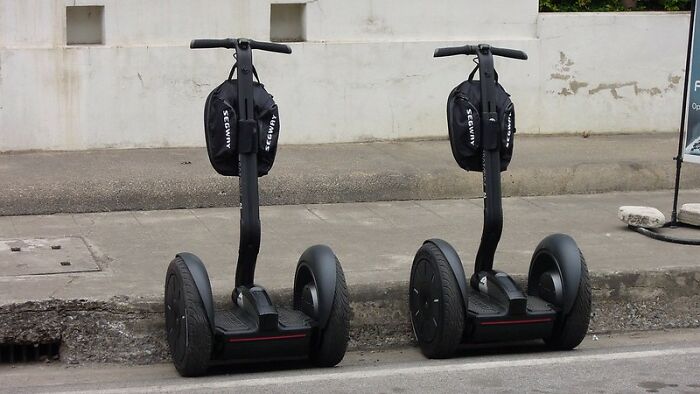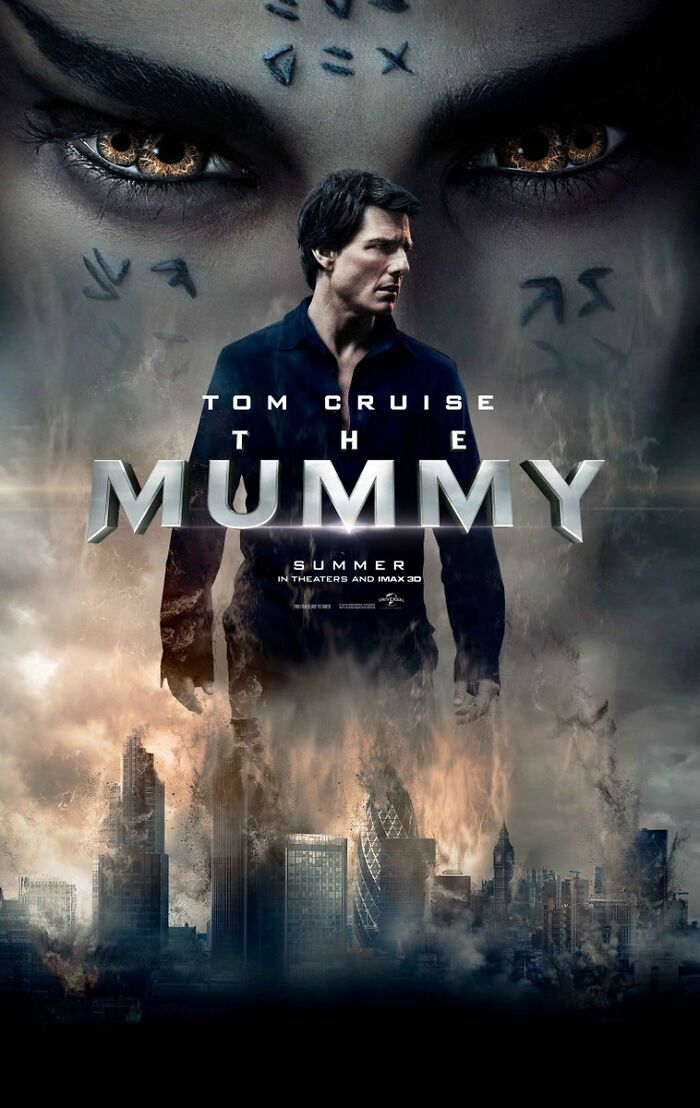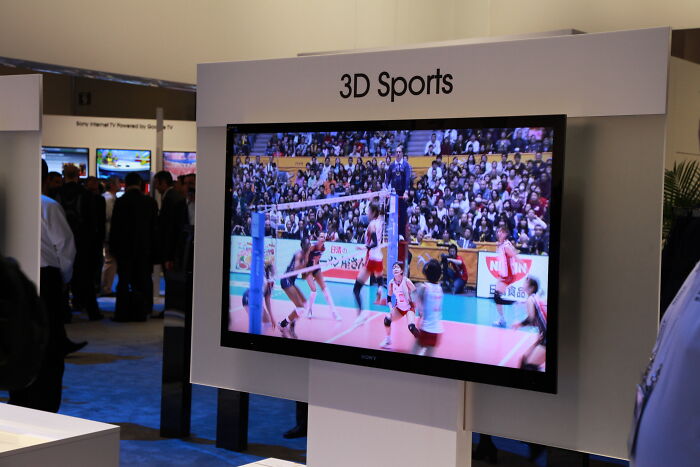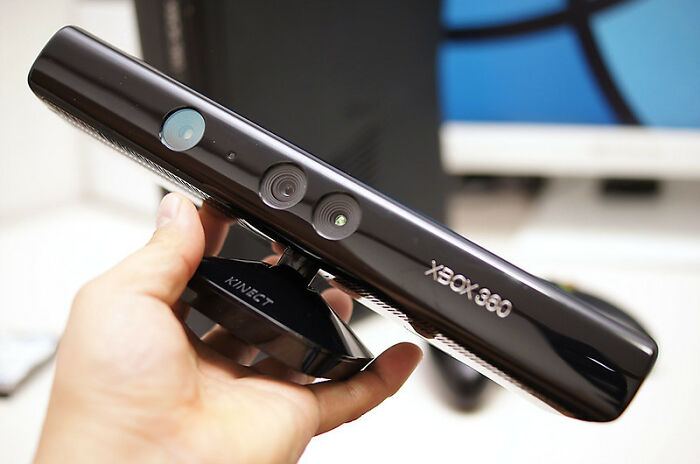
198Kviews
Here Are 30 Things That Were Supposed To Be The Next Big Thing, But Ended Up Forgotten, As Shared By People Online
While it’s fun to guess and debate what the next big thing will be, regardless of whether it’s technology, political or social situations, or any other aspect, it’s much more fun to take a look at the things people said would be the next big thing that never did.
Reddit has recently been discussing just that—all of the things that people thought would be huge, but that most of us have now forgotten (or didn’t even know) about.
The online community’s user u/LineOfDeath (very appropriate given the question) asked people “What was supposed to be ‘The Next Big Thing’, but totally flopped?” and over 50,000 comments later, the AskReddit post blew up with over 76,000 upvotes in under a day.
Bored Panda invites you to take a look at the things people answered in the list below. And while you’re there, vote and comment on the best ones. Well, OK, not the best ones, but you get what I mean.
More Info: Reddit
This post may include affiliate links.
 Not entirely relevant, but I liked the trend where everybody wanted the smallest cell phone possible. For 20 years cell phones got smaller and smaller. Often being the main selling point of the phone.
Not entirely relevant, but I liked the trend where everybody wanted the smallest cell phone possible. For 20 years cell phones got smaller and smaller. Often being the main selling point of the phone.
Then all of sudden you could watch videos on your phone, and almost overnight the trend reversed to “larger is better”
I like the reversion to Nokia burner phones- not being pestered by the internet. Snake in colour
 The Segway. It was supposed to change the way everyone lived. The invention of the century or something like that. A really big deal.
The Segway. It was supposed to change the way everyone lived. The invention of the century or something like that. A really big deal.
 Airship travel. These were the next, awesome way to travel long distances; in fact the spire on top of the Empire State Building was meant as an anchoring point for airships.
Airship travel. These were the next, awesome way to travel long distances; in fact the spire on top of the Empire State Building was meant as an anchoring point for airships.
The Hindenburg kind of put a damper on it, though
 Google+ was supposed to be the answer to Facebook
Google+ was supposed to be the answer to Facebook
You could have hidden a body on Google + and no one would find it. lol
I really liked it. Despite their seeming omnipresence, I trust Google a lot more than Zuck & Facebook, so I quite enjoyed having a similar platform where I could share things I wouldn't normally share on my other social media accounts. I was actually sad when it shut down.
I think most people thought that google+ was so much better than Facebook, but FB was too big by then. I really liked Google+. Then FB copied every feature that google+ brought to the social network, snd noone batted an eye...
I really liked it, I don't know what happened to it, I personally think it had potential!
It was a great communication tool, before they decided to go Facebook.
Does anyone remember google chat? I actually really liked that program at the time. It was super basic.
Google+ might not be the answer to facebook but google has the answers to everything else.
I've seen, but never clicked it. I didn't know that it was a social media thing.
 Hoverboards? I remember in a span of 3 months everyone had them and showed them off and then they just disappeared.
Hoverboards? I remember in a span of 3 months everyone had them and showed them off and then they just disappeared.
 This one might be a bit obscure just because I've only ever met one other person familiar with it, but Google's Project Ara modular smartphone was looking like it could've been the end all be all of smartphones.
This one might be a bit obscure just because I've only ever met one other person familiar with it, but Google's Project Ara modular smartphone was looking like it could've been the end all be all of smartphones.
Based off the Phonebloks idea of having a Lego-like hot-swappable module phone, the idea was that you could switch out any components of the phone on the fly. Camera, fingerprint scanner, even different quality screens. Conceptually, it really looked like it could take over the phone market, as it would lead to people not having to buy whole new phones anymore, but rather replacement or upgraded parts to a phone they already liked, thereby reducing costs and increasing utility.
You don't want a phone with 5 cameras that inflate the cost unnecessarily? Just buy a one camera module. You want a 1440P Super Amoled screen to replace your 720P regular screen? Buy one and swap it in.
However, like many Google projects, it died off for myriad reasons and the longstanding era of $1000 dollar smartphone slabs lived on.
 What ever happened to those curved televisions? I remember seeing one on an advert a few years back bit havent seen or heard about them since.
What ever happened to those curved televisions? I remember seeing one on an advert a few years back bit havent seen or heard about them since.
 The "Dark Universe" cinematic universe, starting with 2017's THE MUMMY.
The "Dark Universe" cinematic universe, starting with 2017's THE MUMMY.
 Asbestos
Asbestos
Technically it was a hit! Right until it flopped when people figured out the whole 'inhaling rockfibers is not healthy' thing...
It is still one of the most effective insulations and flame retardants of all time. It is just that whole "poking holes in your lungs" thing that killed it.
 Dip N Dots...
Dip N Dots...
Been the "Ice Cream Of The Future" for 40 years now it seems.
Lazer discs the size of records.
I remember those. Few places sold them. Everyoine sold and rented VHS tapes. And people could program their VCR to tape their favorite show.
QR Codes.
After so many years, they're finally getting some traction during Covid. I wonder if it will last.
 HD DVD
HD DVD
Still remember half the movies being blue and the others red.
Amazon’s shopping buttons. They pushed really hard for those and I never saw the point.
 At the time video calling with your phone completely flopped because 3G couldn't support it. There was so much advertising about this thing that was meant to be huge but the tech really didn't work yet. But it did blow up later on with 4G, better phones, wifi in more public spaces.
At the time video calling with your phone completely flopped because 3G couldn't support it. There was so much advertising about this thing that was meant to be huge but the tech really didn't work yet. But it did blow up later on with 4G, better phones, wifi in more public spaces.
video calling is doomed to fail. I have to admit that zoom and skype are tedious.People like to do other things while speaking to others, which is why people still phone each other.
Hydrogen cars were a promising new form of motorized vehicle. They were supposed to be incredibly good for the environment, emitting only water as the exhaust. They exist, but not like how some people imagined. I was a pretty big hydrogen car believer at the time. There are some hydrogen stations, but mostly centered around California. Thing is that the hydrogen is quite expensive and not very efficient compared to smaller engines, hybrids, and EV’s. The hydrogen is also somewhat inefficient to produce, store, and distribute as well.
You can actually get a hydrogen car though, they’re out there. The Toyota Mirai is a really good example. Out of all hydrogen cars, that one is definitely most popular. In fact, Toyota pays for $15,000 worth of hydrogen in your first few years of ownership since it’s so expensive. This means that for your first 3-ish years of owning one, you might not have to pay a penny in fuel. As you can see I’m still a hydrogen advocate. Don’t expect to be able to take it very far from your nearest hydrogen station though.
 Elizabeth Holmes.
Elizabeth Holmes.
Read "Bad Blood." She not only conned hundreds of people, she single-handedly set back the credibility of women in the tech industry.
The Wii U
YES. i still have my Wii U pad and all the acceseries to this day. and they work perfect
hat streaming service that lasted like two months. ‘Qubi’ or ‘Qupi’ I think?
Even bad timing aside (a mobile based streaming service at a time when no one could really leave their house) the marketing was just horrible. I saw ads for it for nearly a week before I realized it was a new video streaming service, and by that point was so annoyed by the ads untrusting everything I didn’t care at all, just out of spite. Also I mean it was just YouTube you have to pay for and got worse content.
EDIT: it was Quibi. It made so little impact I couldn’t recall at first.
Remember those robot pets? They were supposed to be the wave of the future. It was an advanced Furby that you could teach tricks and maybe to speak.
I do remember that! That's the only thing i recognize tho.
Load More Replies...Hair in a can - Hyped breathlessly on off-hour infomercials, spray-on hair is supposed to cover up bald spots. In practice, the can emits a fine powder that ends up looking a little better than if you had used a can of spray paint hairinacan...39d94c.jpg 
This is in everyday usage for people on camera. Hardly a failed product.
Load More Replies...Released at the height of the tech boom in the late 1990s, the CueCat was a massively expensive failure. Millions of the cat-shaped bar-code scanners were produced and shipped for free across the U.S., in hopes that people would use them to scan specially marked bar codes to visit Internet sites. (How this was easier than a typing a link, the company never did answer.) Despite a much ballyhooed launch, with CueCat codes printed in Wired and BusinessWeek, consumers never got into the idea of reading their magazines next to a wired cat-shaped scanner, and the CueCat became little more than a high-tech paperweight. cuecat-608...1eb66c.jpg 
Their software no longer works, but if you happen to have one of the devices, there is a driver available that lets you use it as an ordinary text-entry barcode scanner. There's a bookstore by me that uses one at checkout.
Load More Replies...What about Youtube Premium? It's still not big and hopefully, it never will be.
Those community bikes or scooters or whatever they were that showed up by the hundreds in cities a few years ago and littered every corner. Those came and went real fast.
Those are still all over california but I think everyone realizes how much they cost to up keep etc. plus they were getting stolen.
Load More Replies...No-one mentioned the Sinclair C5? Although its going back quite a few years, to the mid-80's
VR doesn't seem to take of as they imagined it.Not saying people aren't using them...
Those are still a really big thing, they're just called smart phones now.
Load More Replies...Remember those robot pets? They were supposed to be the wave of the future. It was an advanced Furby that you could teach tricks and maybe to speak.
I do remember that! That's the only thing i recognize tho.
Load More Replies...Hair in a can - Hyped breathlessly on off-hour infomercials, spray-on hair is supposed to cover up bald spots. In practice, the can emits a fine powder that ends up looking a little better than if you had used a can of spray paint hairinacan...39d94c.jpg 
This is in everyday usage for people on camera. Hardly a failed product.
Load More Replies...Released at the height of the tech boom in the late 1990s, the CueCat was a massively expensive failure. Millions of the cat-shaped bar-code scanners were produced and shipped for free across the U.S., in hopes that people would use them to scan specially marked bar codes to visit Internet sites. (How this was easier than a typing a link, the company never did answer.) Despite a much ballyhooed launch, with CueCat codes printed in Wired and BusinessWeek, consumers never got into the idea of reading their magazines next to a wired cat-shaped scanner, and the CueCat became little more than a high-tech paperweight. cuecat-608...1eb66c.jpg 
Their software no longer works, but if you happen to have one of the devices, there is a driver available that lets you use it as an ordinary text-entry barcode scanner. There's a bookstore by me that uses one at checkout.
Load More Replies...What about Youtube Premium? It's still not big and hopefully, it never will be.
Those community bikes or scooters or whatever they were that showed up by the hundreds in cities a few years ago and littered every corner. Those came and went real fast.
Those are still all over california but I think everyone realizes how much they cost to up keep etc. plus they were getting stolen.
Load More Replies...No-one mentioned the Sinclair C5? Although its going back quite a few years, to the mid-80's
VR doesn't seem to take of as they imagined it.Not saying people aren't using them...
Those are still a really big thing, they're just called smart phones now.
Load More Replies...
 Dark Mode
Dark Mode 

 No fees, cancel anytime
No fees, cancel anytime 






































































